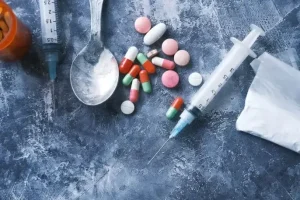Abstinence Violation Effect AVE
August 29, 2024

During a smoking cessation attempt, participants reported on SE, negative affect and urges at random intervals. Findings indicated nonlinear relationships between SE and urges, such that momentary SE decreased linearly as urges increased but dropped abruptly as urges peaked. Moreover, this finding appeared attributable to individual differences in baseline (tonic) levels of SE. When urge and negative affect were low, individuals with low, intermediate or high baseline SE were similar in their momentary SE ratings.

Outcome Studies for Relapse Prevention
Additionally, lab-based studies will be needed to capture dynamic processes involving cognitive/neurocognitive influences on lapse-related phenomena. The terms “relapse” and “relapse prevention” have seen evolving definitions, complicating efforts to review and evaluate the relevant literature. Definitions of relapse are varied, ranging from a dichotomous treatment outcome to an ongoing, transitional process [8,12,13]. Overall, a large volume of research has yielded no consensus operational definition of the term [14,15].
Exercise deprivation increases negative mood in exercise-addicted subjects and modifies their biochemical markers
Taylor may think, “All that good work down the drain, I am never going to be able to keep this up for my life.” Like Jim, this may also trigger a negative mindset and a return to unhealthy eating and a lack of physical exercise.
Neurobiology of cue-reactivity, craving, and inhibitory control in non-substance addictive behaviors
- Examples of high-risk contexts include emotional or cognitive states (e.g., negative affect, diminished self-efficacy), environmental contingencies (e.g., conditioned drug cues), or physiological states (e.g., acute withdrawal).
- Additionally, no studies identified in this review compared reasons for not completing treatment between abstinence-focused and nonabstinence treatment.
- Cognitive dissonance also arises, and attributions are then made for the violation.
- The dynamic model of relapse assumes that relapse can take the form of sudden and unexpected returns to the target behavior.
- Getting out of a high-risk situation is sometimes necessary for preserving recovery.
So, if you want to stop off at the gym after work several days a week, leave some spare workout clothes in the car so you don’t have to remember to bring them on the right day. If your desk is so cluttered you can’t find your bills, never mind creating a budget; spend some time getting organized so that the mess doesn’t become a barrier to managing your finances. If you can never remember whether you took your vitamins, count them into a pill container every Sunday, so you have a way to keep track. The use of such situational inducements can make a big difference in your ability to follow through on a resolution. Principles of relapse prevention have been used in the treatment of sex offenders.

Avoidance is an excellent coping strategy if you know that you are likely to run into danger. • Build a support network of friends and family to call on when struggling and who are invested in recovery. The Institute for Research, Education and Training in Addictions (IRETA) is an independent 501(c)3 nonprofit located in Pittsburgh, PA.
Relapse prevention for addictive behaviors
Although withdrawal is usually viewed as a physiological process, recent theory emphasizes the importance of behavioral withdrawal processes [66]. Current theory and research indicate that physiological components of drug withdrawal may be motivationally inert, with the core motivational constituent of withdrawal being negative affect [25,66]. Thus, examining withdrawal in relation to relapse may only prove useful to the extent that negative affect is assessed adequately [64]. Withdrawal tendencies can develop early in the course of addiction [25] and symptom profiles can vary based on stable intra-individual factors [63], suggesting the involvement of tonic processes. Despite serving as a chief diagnostic criterion, withdrawal often does not predict relapse, perhaps partly explaining its de-emphasis in contemporary motivational models of addiction [64].
- In a meta-analysis by Carroll, more than 24 RCT’s have been evaluated for the effectiveness of RP on substance use outcomes.
- It involves the degree of balance in the person’s life between perceived external demands and internally fulfilling or enjoyable activities.
- Conversely, a return to the target behavior can undermine self-efficacy, increasing the risk of future lapses.
- The RP model proposes that at the cessation of a habit, a client feels self-efficacious with regard to the unwanted behaviour and that this perception of self-efficacy stems from learned and practiced skills3.
This concurs not only with clinical observations, but also with contemporary learning models stipulating that recently modified behavior is inherently unstable and easily swayed by context [32]. While maintaining its footing in cognitive-behavioral theory, the revised model also draws from nonlinear dynamical systems theory (NDST) and catastrophe theory, both approaches for understanding the operation of complex systems [10,33]. Detailed discussions of relapse in relation to NDST and catastrophe theory are available elsewhere [10,31,34]. Lindsey Rodriguez is a third-year abstinence violation effect doctoral student in the Social Psychology Program at the University of Houston, USA. Her long-term research interests include the development of a comprehensive understanding of how problematic alcohol use and interpersonal relationship processes interact to influence various physical, emotional, and relational outcomes for individuals and their relationship partners. In conclusion, the abstinence violation effect is a psychological effect that impacts those in recovery, as well as those who are focused on making more positive behavioral choices in their lives.
What Can Clinicians Do To Counteract the AVE?

One study [46] reported increases in daily SE during abstinent intervals, perhaps indicating mounting confidence as treatment goals were maintained [45]. The client’s appraisal of lapses also serves as a pivotal intervention point in that these reactions can determine whether a lapse escalates or desists. Establishing lapse management plans can aid the client in self-correcting soon after a slip, and cognitive restructuring can help clients to re-frame the meaning of the event and minimize the AVE [24]. A final emphasis in the RP approach is the global intervention of lifestyle balancing, designed to target more pervasive factors that can function as relapse antecedents. For example, clients can be encouraged to increase their engagement in rewarding or stress-reducing activities into their daily routine.
If you know you won’t have time to do your full workouts for a while, you could set a smaller achievable goal like doing sit-ups when you wake up and push-ups before you go to bed so you don’t lose your forward momentum. Like most things in life, behavior change doesn’t have to be perfect to be rewarding, and some of the joy can stem from the process. 2021 just might be the perfect time to take charge of your own behavior so you can make your resolutions a reality. One critical goal will be to integrate empirically supported substance use interventions in the context of continuing care models of treatment delivery, which in many cases requires adapting existing treatments to facilitate sustained delivery [140]. Given its focus on long-term maintenance of treatment gains, RP is a behavioral intervention that is particularly well suited for implementation in continuing care contexts.
- These covert antecedents include lifestyle factors, such as overall stress level, one’s temperament and personality, as well as cognitive factors.
- By undermining confidence, these negative thoughts and feelings increase the likelihood that an isolated “lapse” will lead to a full-blown relapse.
- Consistent with this idea, EMA studies have shown that social drinkers report greater alcohol consumption and violations of self-imposed drinking limits on days when self-control demands are high [79].
- I completely understand the desire for a single figure that expresses the odds of success.
- The more ACEs children have, the greater the possibility of poor school performance, unemployment, and high-risk health behaviors including smoking and drug use.
- One study found that the Asp40 allele predicted cue-elicited craving among individuals low in baseline craving but not those high in initial craving, suggesting that tonic craving could interact with genotype to predict phasic responses to drug cues [97].
- Seeing addiction instead as a deeply ingrained and self-perpetuating habit that was learned and can be unlearned doesn’t mean it is easy to recover from addiction—but that it is possible, and people do it every day.
Relapse to smoking
Specifically, RP was most effective when applied to alcohol or polysubstance use disorders, combined with the adjunctive use of medication, and when evaluated immediately following treatment. Moderation analyses suggested that RP was consistently efficacious across treatment modalities (individual vs. group) and settings (inpatient vs. outpatient)22. Oxford English Dictionary defines motivation as “the conscious or unconscious stimulus for action towards a desired goal provided by psychological or social factors; that which gives purpose or direction to behaviour. Motivation may relate to the relapse process in two distinct ways, the motivation for positive behaviour change and the motivation to engage in the problematic behaviour. This illustrates the issue of ambivalence experienced by many patients attempting to change an addictive behaviour.
Recent Comments